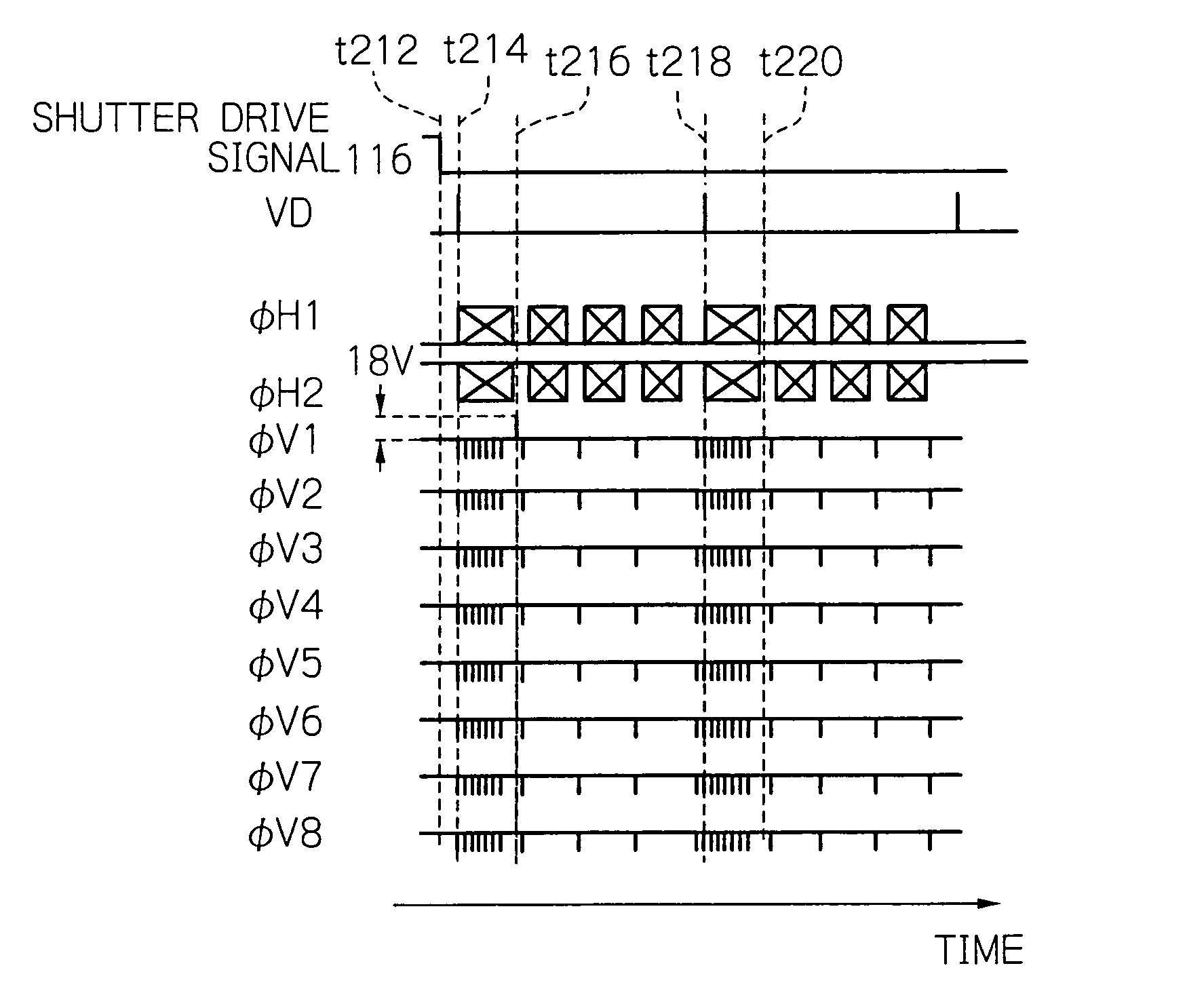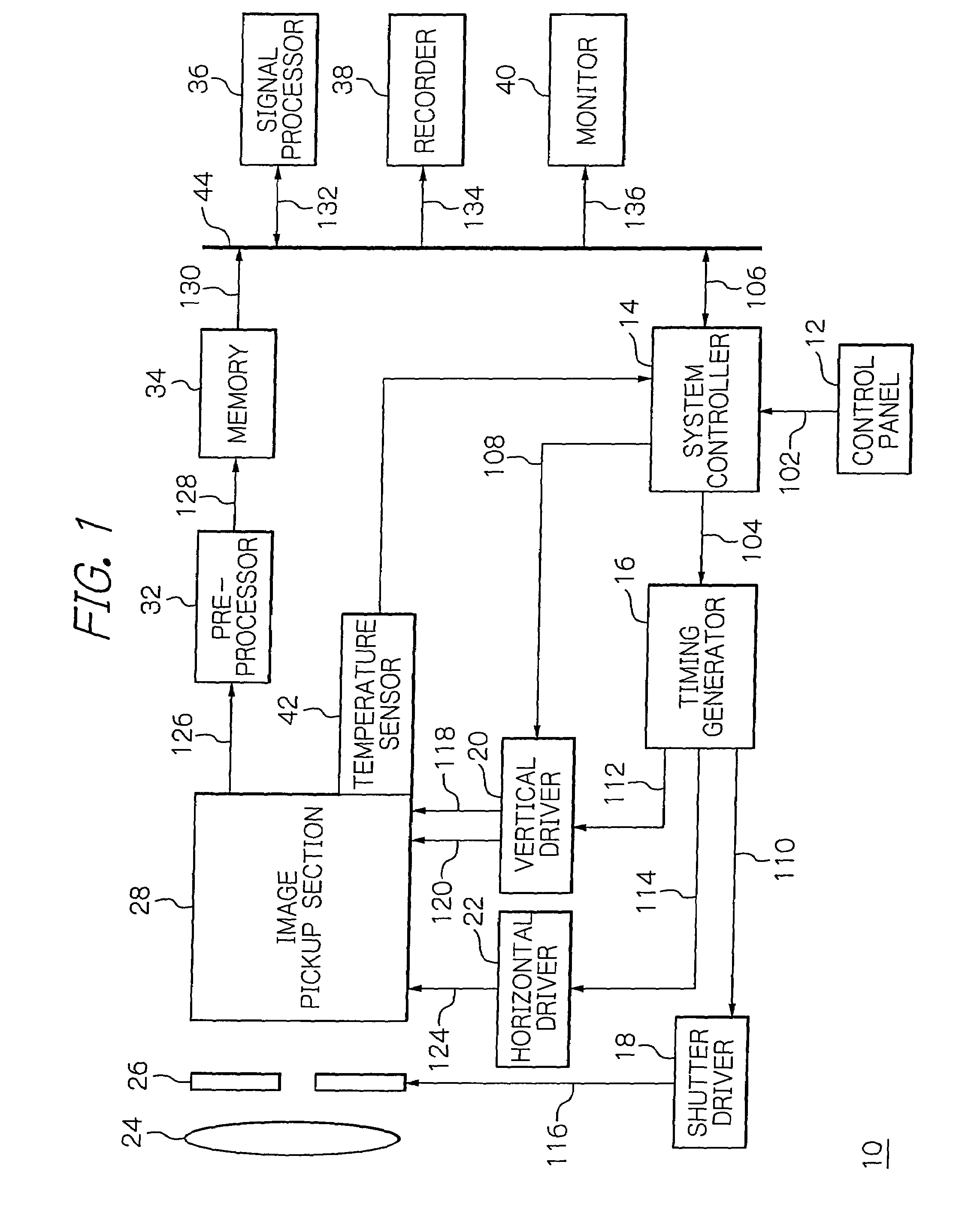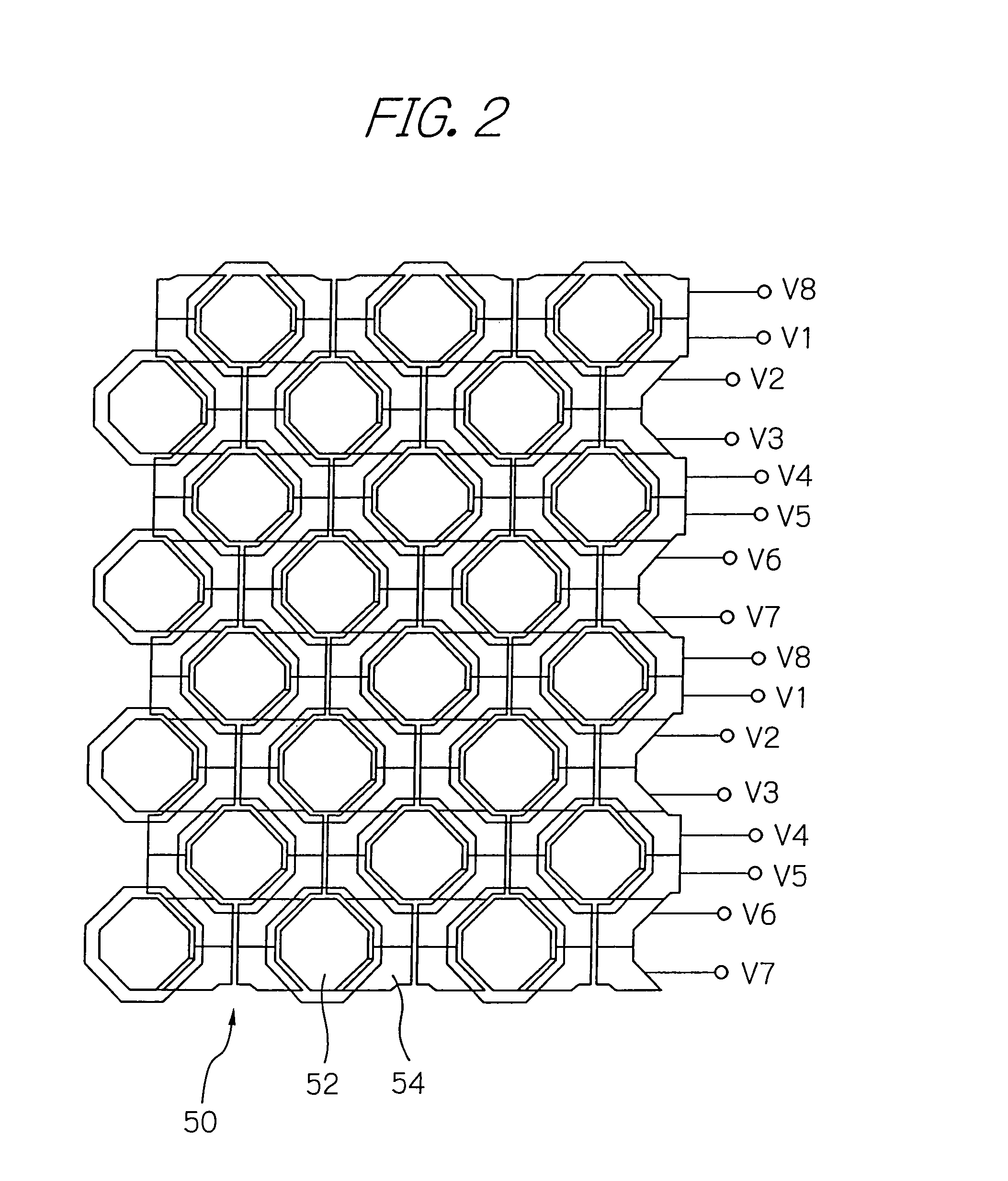Solid-state image pickup apparatus multiplying signal charges depending on imaging circumstances
a solid-state image and pickup apparatus technology, applied in the direction of television systems, radiation controlled devices, color signal processing circuits, etc., can solve the problems of signal charge obtained, prone to strong electric field, ruined advantages such as high picture quality of a common amplifier of ccds, etc., to achieve greater potential well capacity, potential capacity, and potential capacity.
- Summary
- Abstract
- Description
- Claims
- Application Information
AI Technical Summary
Benefits of technology
Problems solved by technology
Method used
Image
Examples
Embodiment Construction
[0034]With reference to the accompanying drawings, an illustrative embodiment of the solid-state image pickup apparatus according to the present invention will be described in more detail. As shown in FIG. 1, the solid-state image pickup apparatus of the illustrative embodiment, generally designated by a reference numeral 10, is constructed such that it is controlled with a system controller 14 and a timing generator 16 in response to manipulating a control panel 12, and a shutter driver 18, a vertical driver 20 and a horizontal driver 22 cause incident light to be caught from a subject field via optics 24 through an optical shutter 26 to pick up the optical image of an imaging field with an image pickup section 28. Note that parts not directly relevant to understanding of the present invention will neither be described nor shown for avoiding redundancy.
[0035]The solid-state image pickup apparatus 10 is also constructed so that the image picked up with the image pickup section 28 is...
PUM
 Login to View More
Login to View More Abstract
Description
Claims
Application Information
 Login to View More
Login to View More - R&D
- Intellectual Property
- Life Sciences
- Materials
- Tech Scout
- Unparalleled Data Quality
- Higher Quality Content
- 60% Fewer Hallucinations
Browse by: Latest US Patents, China's latest patents, Technical Efficacy Thesaurus, Application Domain, Technology Topic, Popular Technical Reports.
© 2025 PatSnap. All rights reserved.Legal|Privacy policy|Modern Slavery Act Transparency Statement|Sitemap|About US| Contact US: help@patsnap.com



